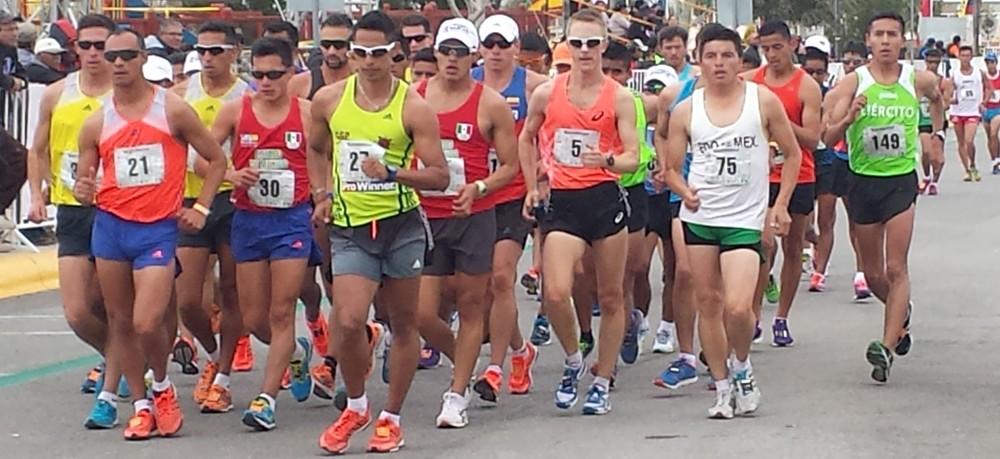Racewalking may not dominate headlines like football or basketball, but it has carved out a unique and often contentious place in the world of competitive sports. Known for its strict rules and peculiar technique, this Olympic discipline frequently sparks debate among athletes, judges, and fans alike. As the spotlight turns to racewalking’s growing controversies-from judging disputes to questions about its legitimacy as a sport-MEL Magazine takes a closer look at why racewalking could be considered the world’s most controversial sport.
The Origins and Rules That Spark Debate in Racewalking
Emerging from 19th-century British pedestrianism, a sport once celebrated for endurance has evolved into a discipline as technical as it is contentious. The fundamental rule – that one foot must appear to be in contact with the ground at all times – sounds simple but is enforced with an unforgiving eye, often leading to heated disputes on tracks worldwide. Judges wield red cards like swords, penalizing lapses in form that can be as subtle as a fleeting loss of contact or bent knees. These nuances have not only shaped racewalking’s unique gait but have also sparked ongoing debates about fairness and interpretation, blurring the lines between strict athleticism and subjective judgment.
Complicating matters further is the sport’s paradoxical blend of endurance and technique, where walkers must simultaneously maintain speed without breaking walking rules. The controversy has led to calls for clearer standards and advanced technology in officiating. Here’s a glance at what sets racewalking apart within athletics:
- Rule 1: Foot contact must be visible – no “lifting” allowed.
- Rule 2: The advancing leg must straighten from the moment of first contact until vertical.
- Evaluate: Judging based on visual observation without aids like slow-motion replay.
| Rule | Enforcement Challenge |
|---|---|
| Visible Contact | Human eye limits lead to controversial disqualifications |
| Straightened Knee | Subtle bends often missed or debated during races |
| Penalties | Three red cards = disqualification, sparking contest over fairness |
The Physical and Mental Challenges Behind the Sport’s Controversy
Racewalking pushes athletes to the limits of human endurance, demanding an extraordinary blend of physical resilience and mental fortitude. Unlike traditional running, racewalkers must maintain constant contact with the ground and keep their leading leg straight from the moment of contact until it passes beneath the body. This unique technique places intense strain on hips, shins, and knees, often resulting in chronic injuries that require extensive recovery and conditioning. Competitors face grueling race durations-sometimes up to 50 kilometers-under blazing sun or unpredictable weather, all while grappling with the perpetual scrutiny of judges who can disqualify them instantly for form infractions.
The mental landscape of racewalking is equally harsh. Athletes must sustain razor-sharp focus amid physical fatigue and external criticism, especially considering the sport’s controversial nature. Judges’ subjective interpretations provoke ongoing debate, leaving racewalkers vulnerable to abrupt disqualifications fueled more by perception than performance. This pressure fosters an intense psychological battle – rife with anxiety and resilience. Key challenges include:
- Maintaining flawless technique over extended periods
- Enduring public skepticism regarding legitimacy and athleticism
- Handling split-second judgments that can alter careers
- Preparing mentally for high-stakes competitions often overshadowed by controversy
| Challenge | Impact on Athlete |
|---|---|
| Physical Strain | Chronic injuries and muscle fatigue |
| Judging Pressure | Heightened stress and focus |
| Technique Enforcement | Constant vigilance of form |
| Public Perception | Emotional resilience against criticism |
How Racewalking Can Gain Respect and Attract New Audiences
Changing the public’s perception of racewalking is not merely a matter of promoting the sport but redefining its image altogether. While often mocked for its unique technique, racewalking demands exceptional endurance, technique, and strategy akin to any elite athletic event. Highlighting the sport’s rigorous training regimes and showcasing elite athletes’ compelling personal stories can foster appreciation and offer a human element that resonates beyond the eyebrow-raising form. Integrating advanced performance analytics and real-time judging graphics during broadcasts could also make it more engaging, offering fans transparent insights rarely seen in the sport’s history.
To attract new audiences, organizers and broadcasters might consider:
- Innovative broadcasting techniques: Use slow-motion replays and athlete biometrics to emphasize the sport’s physical demands.
- Community engagement: Host grassroots competitions combined with interactive workshops to nurture local interest.
- Collaborations with influencers: Partnerships with fitness and lifestyle personalities to boost mainstream appeal.
| Strategy | Potential Impact |
|---|---|
| Enhanced Digital Coverage | Broadened global visibility and younger audience reach |
| Athlete Storytelling | Builds emotional connections and humanizes competitors |
| Interactive Community Events | Increases grassroots participation and local support |
The Way Forward
As racewalking continues to spark debate over its legitimacy and appeal, the sport remains a compelling example of how athleticism and unconventional rules can divide public opinion. Whether viewed as a quirky Olympic curiosity or a test of extraordinary endurance, racewalking undeniably challenges traditional notions of competitive sports. As it strides forward, racewalking’s controversial status ensures it will remain in the spotlight, inviting both scrutiny and admiration from fans and critics alike.





